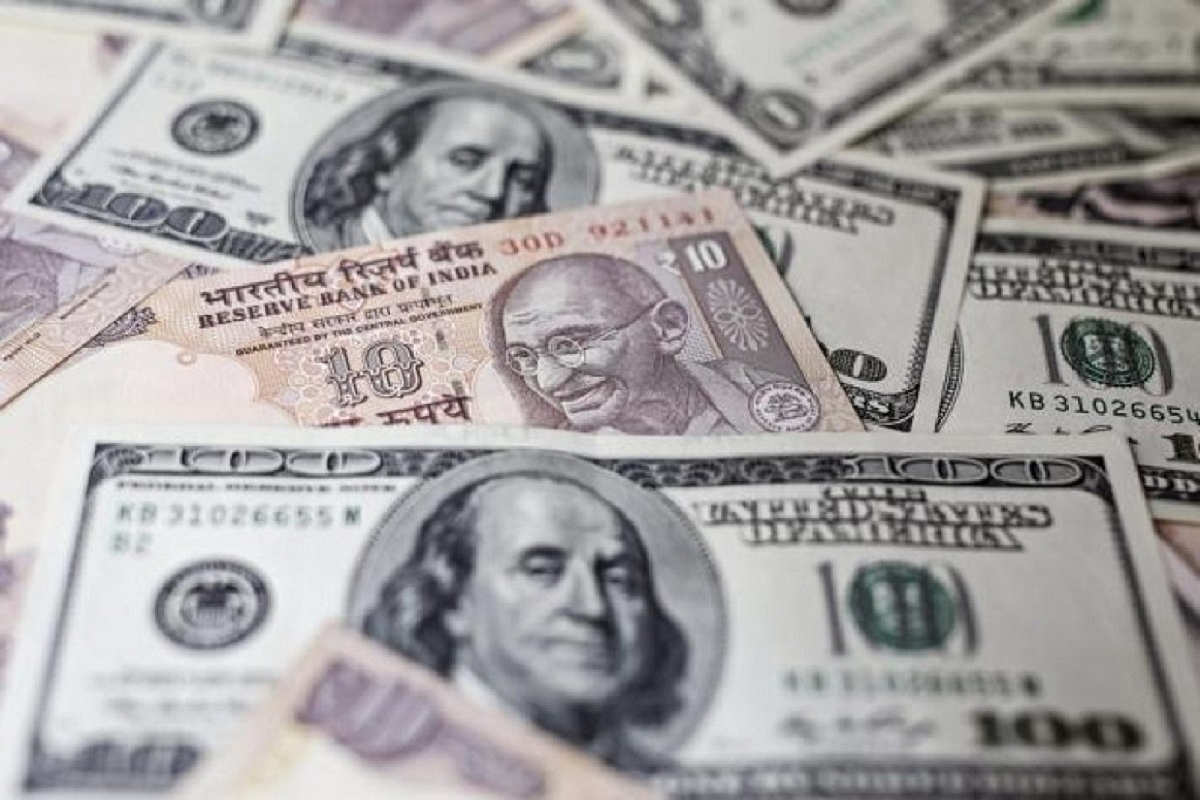Context
Rupee Depreciation Not A Cause For Concern; Here's Why

The dollar and rupee
Despite the rupee touching a lifetime low of 80 against the dollar, the fundamentals of the resilient Indian economy remain strong.
Context: The rupee has depreciated about 7.5 per cent against the dollar in 2022 so far.
Foreign portfolio investors have withdrawn about $14 billion from Indian equity markets in 2022-23.
Still, the performance of the Indian currency has been better than its global peers.
The Japanese yen, euro, Swiss franc, and British pound have depreciated much more against the dollar, signifying the resilience of the Indian rupee.
Reasons for the slide: The rupee depreciation can be attributed to multiple global factors that are out of the Indian government's hands.
The US Federal Reserve's aggressive monetary policy tightening after a prolonged loose state has led to a massive outflow of foreign portfolio capital from India.
Under a tight monetary policy, the US Fed raises interest rates to control the money supply in the economy. This makes it more profitable for investors to save money in the US than to invest in India.
The Ukraine-Russia conflict is a factor too, as the Western sanctions led to an energy price hike around the world, leading to an outflow of dollars besides disrupting business relations between nations.
Covid-19-induced supply crunch has led to reduced manufacturing, while the pent-up demand in economies is leading to soaring inflation, which further leads to an even tighter monetary policy.
RBI standing firm: Governor Shaktikanta Das has maintained that they have zero tolerance for volatile and bumpy movement in the rupee and added that the central bank's actions have helped in smoother movement.
He said the RBI has been supplying US dollars to the market to ensure adequate supply of liquidity and also clarified that the central bank does not target a particular level for the currency.
Das said there was no need to be alarmed by unhedged exposures on foreign borrowings. The bulk of such exposures are by state-owned companies and the government can help out if need be, he added.
The inflation targeting framework has worked well since adopting it in 2016 and should continue in the interest of the economy and the financial sector, Das said.
Relief underway: Despite this being a globally induced crisis, the Government of India along with the RBI is taking measures to strengthen the rupee.
Earlier this month, the RBI announced new liberalised rules to attract foreign inflows.
It also raised the overseas borrowing limits for companies.
The government raised import duty on gold imports.
It also increased interest rates in recent months, thus increasing the attractiveness of holding Indian rupees for residents and non-residents.
Blessing in disguise: In spite of the dire events, India stands to gain from this rupee slide to an extent.
The depreciation of a currency is likely to enhance export competitiveness, which in turn impacts the economy positively.
The depreciation also impacts imports by making them more costly, thus providing an incentive to raise production capacities domestically.
The currency slide may be good for businesses in India.
Even at the current levels, the rupee is looking very attractive. Over the last week, on four of the five days from 14 to 20 July, foreign portfolio investors were buying equity in India (Rs 7,012 crore on 20 July alone).
Moreover, the bounce-back will be strong once the market senses that the US Fed’s rate hikes have reached their apogee, possibly sometime in early or mid-2023.
What lies ahead: A lot depends on how much higher US interest rates have to go before the Fed starts going slow on targeting inflation and starts backing growth.
As long as the US rates keep rising, the RBI cannot keep rupee rates low.
The Indian picture: India is likely to grow at 7 per cent or more this fiscal, while the US is staring at a possible recession by early 2023.
Bank balance sheets in India have never been better over the last decade, and tax revenues continue to be buoyant as of now.
The actions of the RBI and Government of India have yielded good results so far. The current equilibrium in the economy should, therefore, remain despite the global shocks.
Support Swarajya's 50 Ground Reports Project & Sponsor A Story
Every general election Swarajya does a 50 ground reports project.
Aimed only at serious readers and those who appreciate the nuances of political undercurrents, the project provides a sense of India's electoral landscape. As you know, these reports are produced after considerable investment of travel, time and effort on the ground.
This time too we've kicked off the project in style and have covered over 30 constituencies already. If you're someone who appreciates such work and have enjoyed our coverage please consider sponsoring a ground report for just Rs 2999 to Rs 19,999 - it goes a long way in helping us produce more quality reportage.
You can also back this project by becoming a subscriber for as little as Rs 999 - so do click on this links and choose a plan that suits you and back us.
Click below to contribute.
Latest